Why hike machu picchu (5 Reason)

Why hike Machu Picchu? It’s more than just a journey through mountains; it’s a step into history, culture, and the heart of nature itself. As you walk along ancient paths and gaze upon breathtaking views, each step leads you closer to Machu Picchu’s legendary ruins. You’ll experience why thousands are drawn to this iconic site every year, from the incredible Inca history and world-famous landmarks to the peaceful moments spent atop the Andes. Whether it’s the thrill of scaling the Inca Trail, meeting the local Andean communities, or simply standing at the Sun Gate with Machu Picchu below, hiking here is an unforgettable adventure.
Why hike machu picchu
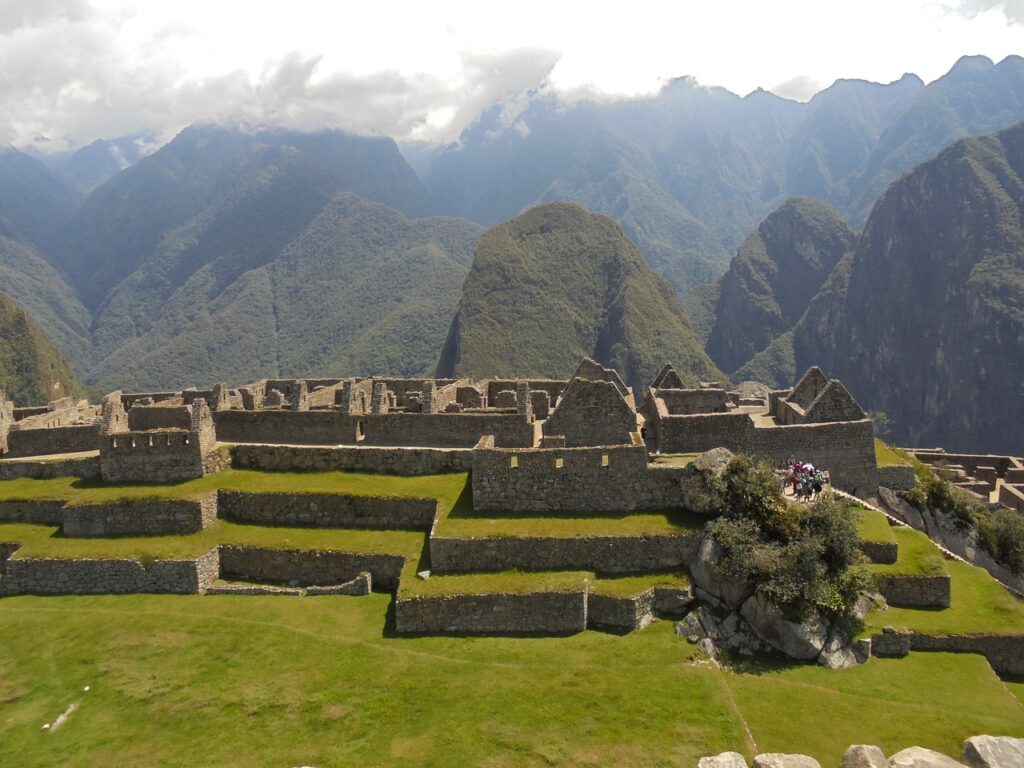
A hike to Machu Picchu isn’t just a trip. It’s a special journey filled with ancient history, beautiful nature, and chances for self-discovery. Here are the top reasons why hiking to Machu Picchu is a must-do, with clear details and landmarks that make this trip unforgettable.
1. Discover the History of Machu Picchu’s Ancient Ruins
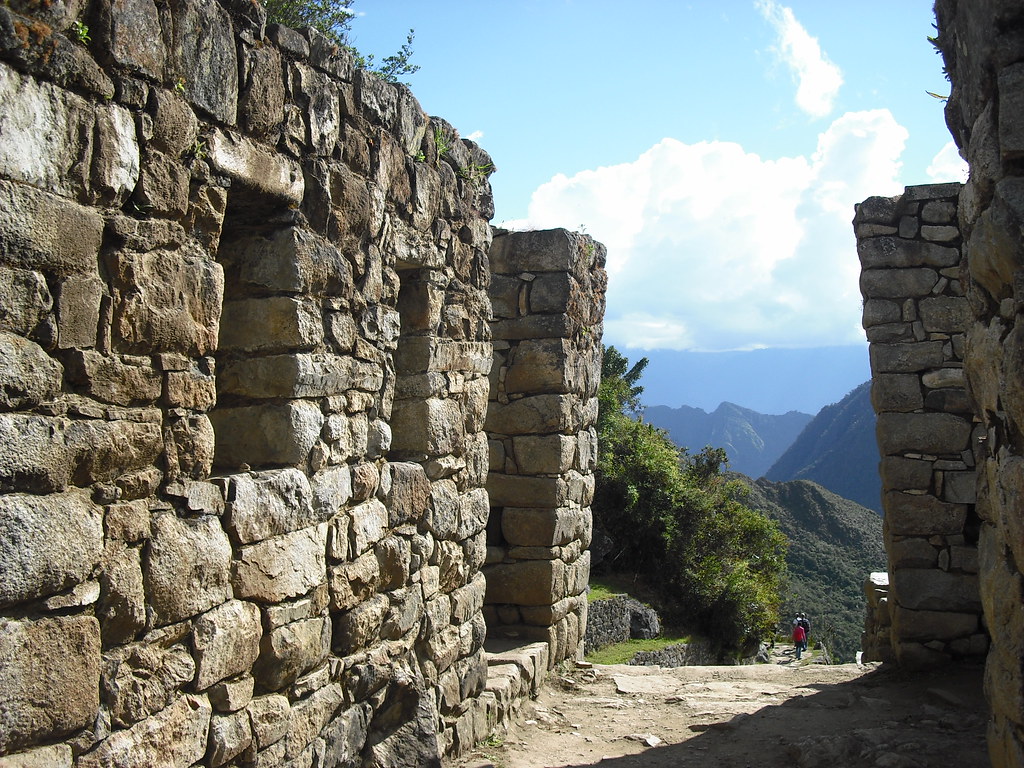
Why Go: Machu Picchu was built in the 1400s by the Inca civilization and is known as the “Lost City of the Incas.” Hiking to Machu Picchu gives you a chance to learn about this ancient place and see the incredible work of the Inca people.
Places to See: Along the way, you’ll pass famous spots like the Sun Gate (Inti Punku), which was an entrance used by the Inca people. You’ll also see the Temple of the Sun, where the Incas honored the Sun God. The Sacred Plaza is another important area with the Intihuatana stone, a special rock the Incas used to study the stars.
2. Enjoy Amazing Mountain Views and Unique Nature
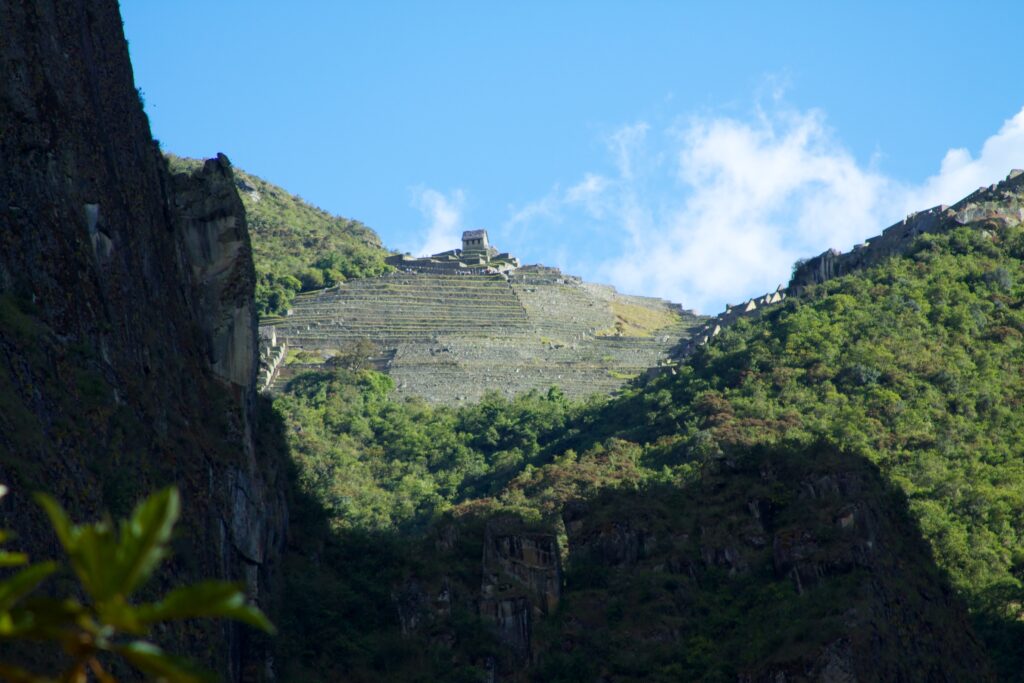
Why Go: The trail to Machu Picchu goes through many different landscapes, from high mountains to thick forests. Every part of the hike shows the beauty of nature in Peru.
Beautiful Places to Visit: On the Salkantay Trek, hikers cross Salkantay Pass, a very high point at over 15,000 feet. If you’re on the Inca Trail, you’ll pass Dead Woman’s Pass (Warmiwañusca), the highest point on this trail, with great views of the valleys below. Those on the Salkantay route can also see Lake Humantay, a bright turquoise lake surrounded by snowy mountains.
3. Challenge Yourself with the Inca Trail or Other Routes
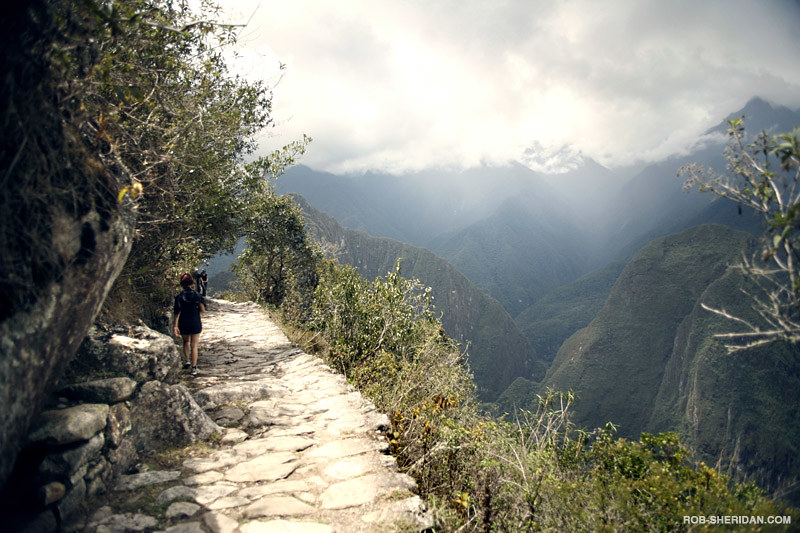
Why Go: Hiking to Machu Picchu is a challenge that feels rewarding. There are different trails to choose from, each with its own experience. The famous Inca Trail is a four-day hike with many Inca sites, while the Salkantay and Lares treks show different parts of the mountains.
Trails to Choose From:
- Inca Trail: This four-day hike is known for its blend of nature and history, with sites like Runkurakay and Phuyupatamarca along the way.
- Salkantay Trek: A five-day hike that crosses Salkantay Pass and includes stops at beautiful places like Humantay Lake.
- Lares Trek: This route goes through traditional Andean villages like Cancha Cancha, where hikers can learn about local customs.
Read more: Why Do You Need Hiking Socks?
4. Meet Andean People and Learn Their Culture
Why Go: Hiking to Machu Picchu is also a chance to meet people who live in the Andes mountains and learn about their traditions and way of life. Many still speak Quechua, the language of the Incas.
Cultural Stops: On the Lares Trail, you can visit villages like Huacahuasi, known for colorful handmade fabrics and friendly people. You may see locals making chicha, a corn drink, and even join in local celebrations.
5. Find Peace and Inspiration in the Mountains
Why Go: Hiking in the Andes mountains gives you a chance to relax, think, and enjoy nature without distractions. Many people come here not only for the hike but also to feel peaceful and inspired.
Special Moments: The quiet spots on trails like the Inca Quarry Trail help you feel closer to nature. Watching the sunrise over Machu Picchu from the Sun Gate or the Sun Temple is unforgettable, making you feel proud and peaceful.
Shortest hike to Machu Picchu
The shortest hike to Machu Picchu is the 1-Day Inca Trail, covering around 10 kilometers (about 6.3 miles) and usually taking between 6 to 8 hours. This trek follows part of the classic Inca Trail, offering a taste of the traditional route but without the need for extensive preparation or camping. It starts at KM 104 on the Cusco-Machu Picchu train line, the point where the short trail begins.
1. Starting Point - KM 104
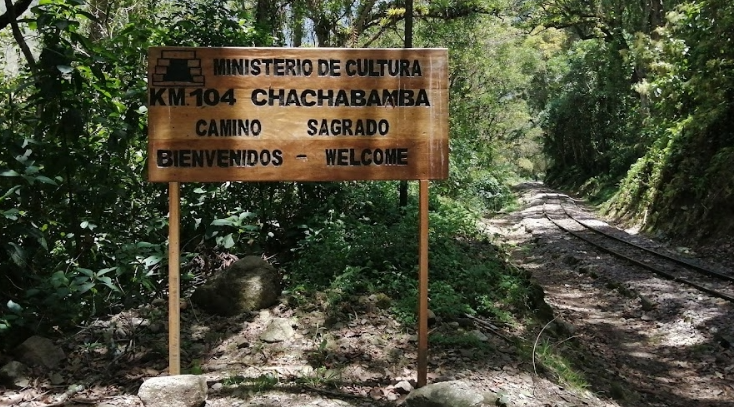
- Location: The hike begins at Kilometer 104, a spot along the train line between Cusco and Aguas Calientes.
- Altitude: This starting point is around 2,100 meters (6,889 feet) above sea level.
- Special Site: The Chachabamba ruins – Right near the trail’s beginning, you’ll see these ancient Inca buildings, made of stone. The Incas likely used this spot for important ceremonies or as a checkpoint.
- Trail Conditions: The first part of the hike goes uphill but is not too hard, taking you into a thick, green forest called the cloud forest.
2. Hiking Through the Forest
- Plants and Animals: This forest is home to many orchids (colorful flowers), bromeliads (a type of plant), and birds, like Peru’s national bird, the Andean Cock-of-the-Rock. You might also spot hummingbirds and butterflies.
- Elevation Gain: The trail slowly climbs to about 2,650 meters (8,694 feet), giving you nice views of the river below and surrounding mountains.
3. Halfway Point - Wiñay Wayna
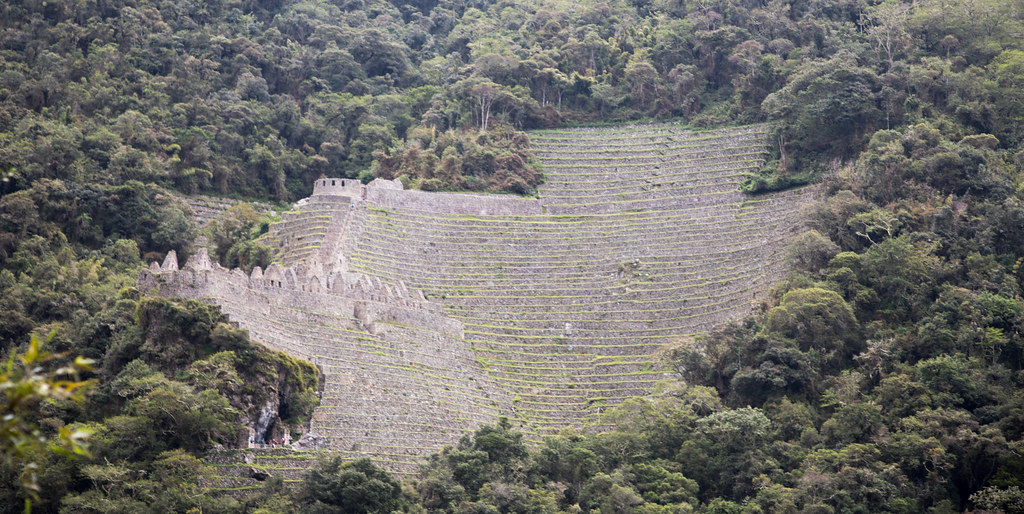
- Location: About 5 kilometers (3 miles) from KM 104. Wiñay Wayna sits at around 2,650 meters (8,694 feet).
- Description: This ancient site has large steps, walls, and terraces built into the hillside. “Wiñay Wayna” means “Forever Young” in Quechua, the language of the Incas. It may have been a place for farming or worship.
- Rest Area: Many hikers stop here for a break and snack. It’s a good spot to take in the views of the valley and enjoy the peaceful surroundings.
4. Reaching Machu Picchu - Sun Gate (Inti Punku)
- Location: The Sun Gate, or Inti Punku, is the last stop before reaching Machu Picchu, around 2,720 meters (8,923 feet) high.
- Viewpoint: This spot offers the first view of Machu Picchu. The Sun Gate was likely a checkpoint for the Incas who walked this trail long ago.
- Arrival Time: Most hikers arrive here in the afternoon. This view of Machu Picchu is very special because you see it from above.
5. Entering Machu Picchu
- Descent: From the Sun Gate, the path goes downhill to the main entrance of Machu Picchu.
- Guided Tour: Once inside, a guide will take you through the main areas, like the Temple of the Sun, Intihuatana stone, and Sacred Plaza. Each of these places shows how smart and spiritual the Incas were.
- End of Day: After the tour, you can take a bus or walk down to Aguas Calientes, where you’ll catch a train back to Cusco in the evening.
Machu Picchu hike cost
Hiking to Machu Picchu is a thrilling journey but can come with various costs depending on the route, timing, and the level of comfort you’re looking for. Here’s a breakdown to give you a clear idea of what to budget:
1. Inca Trail Costs
- Permits: Since the Inca Trail is the most popular, it requires a permit, which typically costs around $500-$600 USD, including entry to Machu Picchu. These need to be purchased months in advance, as they are limited and sell out quickly.
- Tour Packages: Most people go with guided tours, which can range from $600 to $1,200 USD. The price depends on the length of the hike (classic 4-day, 3-day, or express 2-day), and whether you choose budget or luxury options.
2. Salkantay Trek Costs
- Permits: Unlike the Inca Trail, the Salkantay Trek doesn’t require a permit. You will, however, need a Machu Picchu entry ticket (approximately $45-$60 USD).
- Tour Packages: Prices vary based on duration and service level, ranging from $300-$600 USD for a 4-5 day tour. Guided tours often include meals, camping gear, a guide, and entry to Machu Picchu.
3. Lares Trek and Other Alternative Routes
- Permits: These trails generally don’t require permits, but you’ll still need a ticket for Machu Picchu.
- Tour Packages: Expect to pay around $400-$700 USD, including guides, transport, and Machu Picchu tickets.
4. Additional Costs
- Accommodation in Aguas Calientes: If you’re staying the night before or after visiting Machu Picchu, budget between $30-$150 USD per night depending on your accommodation choice.
- Train Tickets: For those who prefer or need a shorter trek, trains from Ollantaytambo to Aguas Calientes range from $60-$150 USD each way.
- Food: Meals along the trek might be included in your package, but you’ll want to budget for food in Aguas Calientes and Cusco. Daily food costs can be around $10-$30 USD.
- Tips for Guides and Porters: Many trekkers budget about 10-15% of the trek cost for tipping.
Total Estimated Budget
- Inca Trail (Guided, 4-day): $800 - $1,500 USD
- Salkantay Trek (Guided, 5-day): $400 - $700 USD
- Lares Trek (Guided, 4-day): $400 - $700 USD
Best time for machu picchu hike
The best time to hike Machu Picchu is during the dry season from May to September. This period offers clear skies and minimal rainfall, making hiking conditions ideal. Peak tourist months are June to August, so if you prefer fewer crowds, consider hiking in May or September. Daytime temperatures range from 15-20°C (59-68°F), but be prepared for cooler nights, especially at higher altitudes, where temperatures can drop to 0-5°C (32-41°F). If you plan to hike the Inca Trail, remember to book your permits well in advance, as they sell out quickly during these popular months.
Conclusion
Hiking to Machu Picchu is an adventure that offers far more than beautiful scenery; it’s a journey that speaks to the soul. Why hike Machu Picchu? For many, it’s to connect with a remarkable piece of history and be surrounded by the splendor of the Peruvian Andes. From seeing ancient Inca ruins to experiencing the stunning views from Salkantay Pass and learning about Andean traditions, the Machu Picchu hike is a rare blend of challenge, beauty, and discovery. For anyone seeking more than just a destination, this hike is the experience of a lifetime, leaving memories of Peru’s peaks and history etched forever in your heart.
Hello! I’m,Ratndip a dedicated trekking enthusiast with a deep love for exploring the world’s most captivating trails. With over 2 years of trekking experience, I’ve had the privilege of hiking through stunning landscapes, from the majestic Himalayas to the lush Amazon rainforest. My journey into trekking started as a personal quest for adventure and has evolved into a lifelong passion for discovering new terrains and connecting with nature.